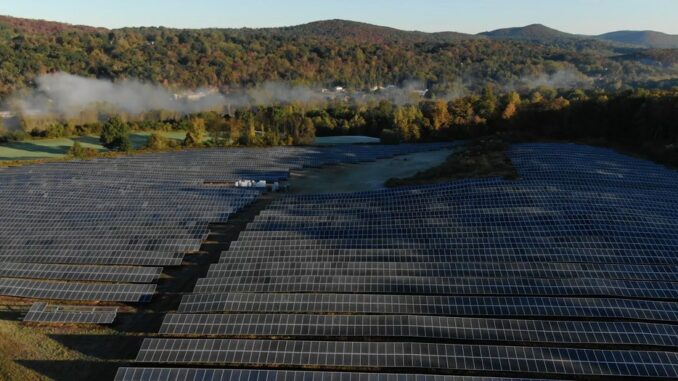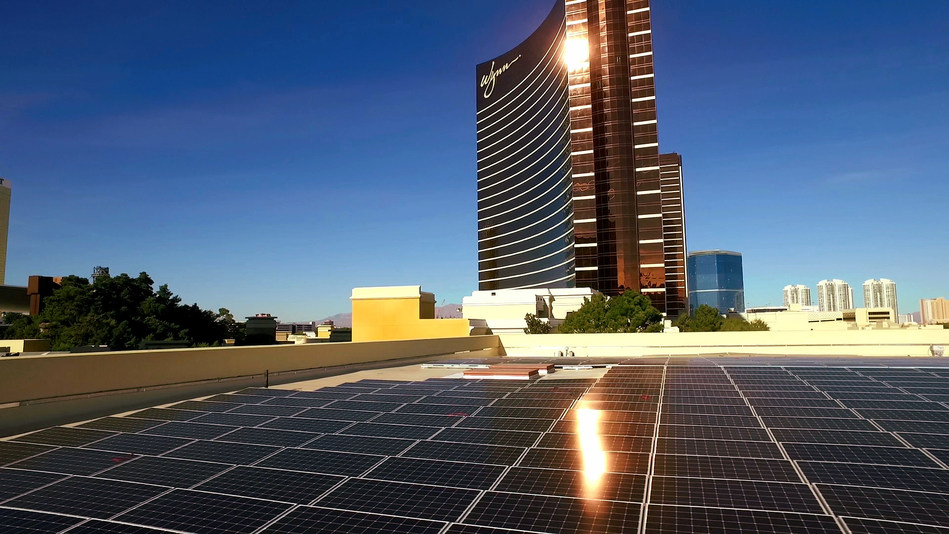
By HTN Staff - 12.6.2019
In September, one of the largest four-season golf and spa resorts in the United States, began commercial operations of its solar farm. This week, the resort — Crystal Springs Resorts, located in the Kittatinny Mountains in Northern New Jersey — which is already reaping the rewards of its investment, will hold a ceremony to officially flip the switch.
Developed in partnership with New Jersey-based Marina Energy, the 25 acre solar field has over 19,000 solar panels and the annual capacity to generate 3.5 Megawatts of electricity. The solar farm is set to provides clean, renewable energy on an annual basis, which more than offsets electricity consumption at the resort’s 280 room Grand Cascades Lodge and 175 room Minerals Hotel combined.
The project has qualified for net metering under New Jersey’s solar program. This means the resort always maintains a stable source of electricity supply by drawing from the grid at night and other low solar generation periods and actually providing excess energy to the grid after all resort consumption has been satisfied during the day.

The Marketing Benefits of Solar Power
With criticism mounting on the wastefulness of the conference and meetings industry, such a large-scale project can position a resort as a best option for organizations seeking to reduce the environmental impact of their offsite meetings.
“Offsite meetings and company retreats are a big part of our business, and it’s important to understand that taking 100 executives on jets to meet in a remote location not only costs money and time; it also has a major environmental cost,” said Chris Mulvihill, the resort’s Chief Marketing Officer.
“By contrast we can send group shuttle service to Manhattan and have a company’s team at our resort in less time than it takes to get through airport security. So it is great to now be able to tell our conference clients that not only do their attendees not have to fly, but they can also wake up in the morning knowing they slept in a solar powered hotel.”
The Cost Benefits of Solar Power
In recent years, a growing number of other hotels and resorts that have installed a wide variety of solar energy systems, not only for environmental reasons but also for cost benefits. Most of these properties have been able to produce enough energy to partially or completely eliminate their energy bills. It doesn’t hurt solar installations also generally come with a significant tax credit.
Last year, for example, Wynn Resorts in Las Vegas, with 2716 rooms, installed a 160-acre solar farm, which has reduced its utility bills by 75%. Combined with the recently installed solar panels covering 103,000 square feet of Wynn’s rooftop, enough renewable energy will be generated to power 5,056 homes and eliminate 33,734 metric tons of CO2 emissions from the environment annually.

With a fixed-cost 10-year financing arrangement, the property will save 20% in energy just over that period. After that, with the investment already paid for, each subsequent year will result in even greater cost savings. The Wynn is also now using renewable energy to power its meetings-and-conventions space expansion, which was completed earlier this year.
Owned and operated by Enel Green Power North America, The Wynn Solar Facility is a standalone solar photovoltaic project located in Fallon, Nevada adjacent to the existing Stillwater hybrid facility, and shares the existing connection infrastructure with the geothermal-solar hybrid plant. According to a recent report, the Wynn Solar Facility generates up to 27 MWdc of renewable energy, equivalent to 20 MWac, to power the resort. With this renewable energy resource offsetting such a sizable percentage of Wynn’s peak power needs, the resort will far exceed requirements outlined in the Nevada Renewable Portfolio Standard.
Earlier this year, Frangipani Beach Resort, Anguilla, switched on its 800 panel 370 kW solar system. The system is built on a quarter acre of land in addition to two solar carports. The system will produce enough power to cancel out 70% of the property’s utility bills. Given its geographic location, on an island resort in the British West Indies, the system had to be designed to withstand potential hurricane force winds — something that Crystal Springs Resorts, in Northern New Jersey, need not worry about.
